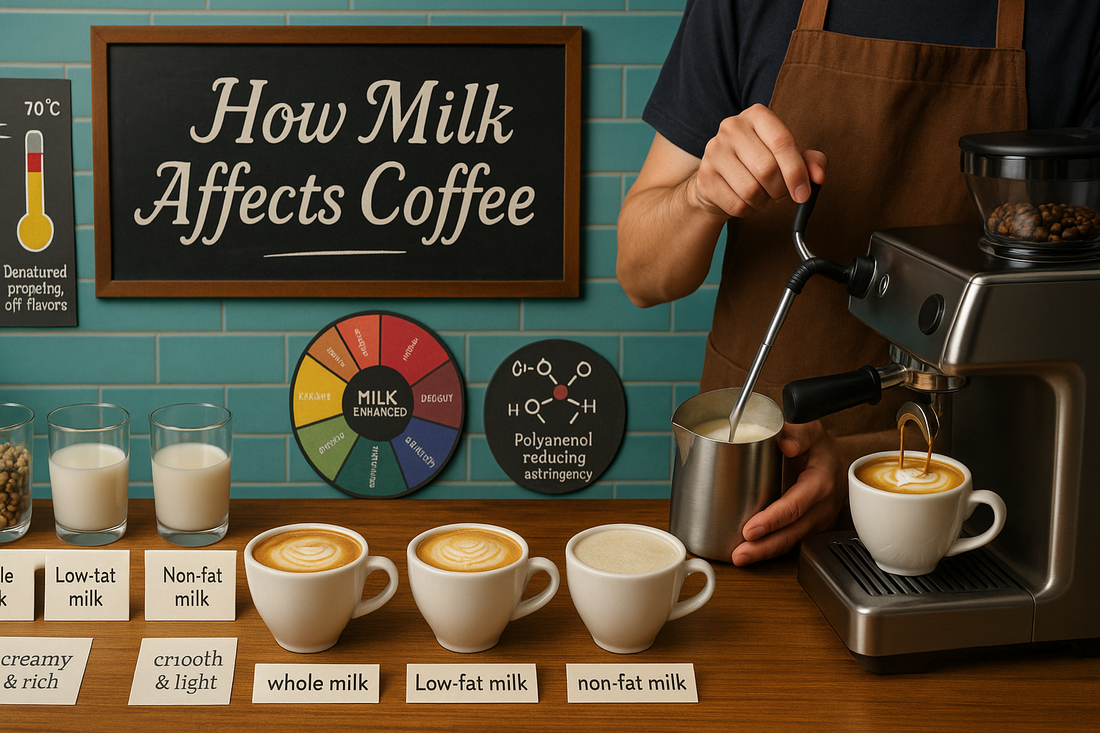
How Milk Affects Coffee
正啟 GLOBALEYESShare this news
Milk significantly impacts coffee—not only influencing mouthfeel but also aroma, temperature, texture, and overall flavor complexity. Here's a concise breakdown of the key ways milk transforms your coffee:

1. Mouthfeel (Body)
Milk adds richness and creaminess, enhancing the coffee's overall texture. The fat and protein content in milk provide a smoother, silkier mouthfeel, especially noticeable with full-fat milk.
- Whole Milk: Smooth, creamy, and rich.
- Low-Fat Milk: Lighter, smoother texture.
- Non-Fat Milk: Thinner, emphasizing coffee's original flavor profile.

2. Flavor
Milk can "soften" both acidity and bitterness. For instance, lightly roasted coffees with fruity acidity can take on a yogurt-like or creamy fruit character. Darker roasts mixed with milk can resemble chocolate, caramel, or nutty flavors.
- Fruity notes: → Creamy fruit or yogurt-like taste.
- Bitter, dark roasts: → Enhanced chocolate, caramel, and nutty notes.

3. Temperature
Milk temperature significantly affects the beverage's quality. Ideally, steamed milk should be heated to around 60–65°C. Above this range, milk proteins start denaturing, resulting in an undesirable grainy texture and pronounced cooked-milk aroma.
- 60–65°C: Optimal, silky texture.
- Above 70°C: May produce a "boiled milk" flavor that overwhelms coffee notes.

4. Aroma
Adding milk can increase the aromatic complexity of coffee drinks, particularly noticeable in latte art drinks or cappuccinos. Common aromatic notes include butter, sugar, biscuits, and nuts, enriching the sensory experience.

5. Chemical Interactions
- Coffee's polyphenols (such as tannins) bind with milk proteins, reducing astringency.
- Coffee's natural acidity slightly neutralizes with calcium in milk, promoting flavor balance and harmony.

Conclusion: Milk—Both Buffer and Catalyst
Milk serves dual purposes, acting as a "buffer" to soften acidity and bitterness, and as a "catalyst" to enrich and expand coffee’s flavor dimensions. This explains the widespread popularity of milk-based coffees such as lattes, cappuccinos, and flat whites.

